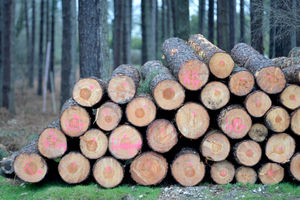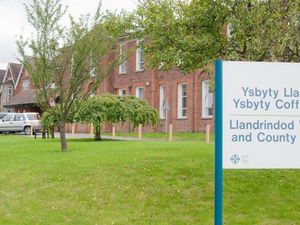How more working forests could reduce hospital waiting times
If the Forestry Commission had just one per cent of the NHS’s budget, there would be a lot less people in hospital waiting rooms.
That is the view of forester Doug Stanley, aged 59, who has worked upon Cannock Chase for 41 years.
He believes working in a forest – being blessed with clean air and tranquil settings – has benefited his health greatly.
And he says if the Government invested more money in working forests, like Cannock Chase, more people could enjoy the healing properties of nature.
“I have worked here for 41 years and I would do it all again,” said Mr Stanley.
“I’m nearly 60, but people say I don’t look my age. I think it is from all the years working here. If we could get just one per cent of the NHS budget [to plant more trees and maintain forests], there would be lower waiting times in hospitals.
“Nature and the outdoors is one of the best medicines you can have.”
Demand
His argument is that forests could provide the answer to an ever increasing demand on NHS services.
Just 10 miles away from Cannock Chase lies the sprawling conurbation of the Black Country, filled with fumes, cars and overcrowded places.
Pollution levels here are higher than in rural areas. Overcrowding is becoming more of a problem and more houses are needed for a growing population.
A demand on services like schools, hospitals, roads and transport is getting close to breaking point. For a small country, the UK – and particularly in England – is densely populated. However, in this small slice of solitude on Cannock Chase, you could hear a pin drop. Or the wind blow, or some of the birds that live among the towering tree tops.
The air is clean here with a scent of pine oil, which some believe has healing properties to alleviate stress and asthma, as well as improving general wellbeing.
That is why Mr Stanley says his employer, Forestry England, should get more Government money to plant more forests.

It is perhaps a little known fact that Cannock Chase is a working forest.
Most people may consider the land to be a nature park. After the First World War, new working forests were planted all around the country to restock wood, which had been depleted due to the war effort. If there wasn’t a working forest on The Chase, then there wouldn’t be a pine forest for people to enjoy.
The need for wood as a commodity allows for forests to be planted, whilst also creating beautiful nature parks, like Cannock Chase.
As a bit of background to Mr Stanley’s job, he has worked for Forestry England [also known as the Forestry Commission] since he was 18, joining as an apprentice.
He is based at Cannock Chase, which is one of the Commission’s many working forests around the country.
The commission, a non-ministerial government department, manages about 80 per cent of the land on The Chase – all of that being forest – while the council manages the rest of the land, which is low-lying heathland. Mr Stanley loves his job and it is not hard to see why. It is not like working behind a desk, or on an industrial estate with heavy machinery and fumes. His office? Tall, towering pine trees that stretch for miles, where birds of prey glide in between the canopies.
“People see us cutting down pine trees and think we are damaging the environment,” said Mr Stanley. “First and foremost, we are a working forest but we do conservation work, so for all the trees we cut down, we replant that same amount.”
The pine trees are deliberately chosen for the size they grow, as they make a valuable commodity, but they are not native to the area. Pine trees tend to stop growing after 60 years, said Mr Stanley.
Climate change
And due to his long service working for the commission, he is now seeing trees being harvested that he planted as an apprentice. It means the forest on Cannock Chase has a double purpose – for commercial benefits and for leisure.
Although the trees are sold for money, there is, in fact, no profit made by the commission. The UK Government subsidizes 20 per cent of the organisation’s funding and the Commission reinvests its money into planting new trees and the upkeep of forests, which includes managing trails around the country like Cannock Chase.
Climate change, and a recent spate of Red Band Needle Blight, means Mr Stanley and his colleagues are considering planting different trees in the future.
One is the Dawn Redwood, a fast-growing tree that makes a valuable resource for timber. It is of the same family as the towering giant redwoods of California in North America.
Pine forests are limited to how much wildlife they can cater for. However, they do provide good homes for birds of prey, such as peregrine falcons and buzzards.
To cater for them, when larger areas of tree felling takes place, foresters always leave one dead tree upright in the middle of the clearing.
This is for birds of prey to perch upon the branches with a great view of the surrounding area to hunt for prey.
So maybe forests could hold the answer to improving health.
With more roads, concrete, houses and cars being used on the road, perhaps we can find remedies to the fumes and chaotic rat-race of everyday life in large towns and cities through nature.





